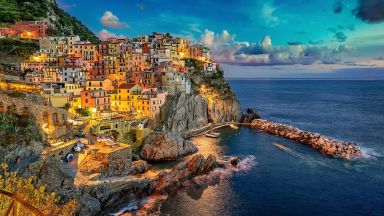Lucca: The Complete Guide

Lucca, considered one of Europe’s most delightful towns, captivates visitors with its walled centre, ranking it among Tuscany’s top attractions. The town boasts magnificent churches, many featuring the distinctive striped facades characteristic of Tuscan architecture, and they house a trove of precious art treasures. While strolling through its narrow streets and spacious piazzas, you can relish the serene ambiance and take in the alluring buildings. Unlike the bustling crowds of Florence and Pisa, Lucca offers a more relaxed atmosphere, making it a sought-after destination for a peaceful retreat.
The charming churches you see today were primarily constructed in the 12th century, partly using ancient materials, and now stand as some of Tuscany’s most exquisite architectural marvels. Begin your exploration with a walk along the encircling walls, offering a comprehensive overview of the city, before immersing yourself in the captivating ambiance of this endearing Italian gem.
TIP: If you are visiting Lucca for just a day and want to make the most of your visit, you may want to consider taking a walking tour with a local guide. This is one of the most complete and best-rated city tours that covers the main, must-see attractions in about 2 hours. If you prefer exploring at your own pace, read our Self Guided Walking Tour of Lucca.
History of Lucca
Lucca, a historic city in Tuscany, Italy, is known for its well-preserved Renaissance walls and rich history that dates back to ancient times. Its strategic location and cultural heritage have made it an important city throughout the centuries.
Ancient and Roman Times
Lucca’s history begins in pre-Roman times when it was inhabited by the Etruscans. The city became a Roman colony in 180 BC, which marked the beginning of its rise to prominence. The layout of Lucca’s historic center still reflects the Roman street plan, and remnants of the Roman amphitheater can be seen in the Piazza dell’Anfiteatro.
Medieval Period
After the fall of the Roman Empire, Lucca became a prosperous independent city-state. It was one of the few cities in Europe to expand its walls during the Middle Ages, a testament to its economic strength and the need for protection against outside threats. During this period, Lucca was a major center of the silk trade, which brought wealth and influence to the city.
Renaissance and Beyond
In the Renaissance period, Lucca remained a powerful and independent city-state, maintaining its status through strategic alliances and skilled diplomacy. The city was famous for its banking prowess and its mint. Lucca’s impressive walls, which are a distinctive feature of the city today, were built during this period to defend against the advances of larger regional powers such as Florence.
19th Century to Modern Day
In 1805, Lucca was conquered by Napoleon, who gave it to his sister, Elisa Bonaparte, as a principality. After the Congress of Vienna in 1815, Lucca became a Bourbon duchy before eventually being annexed by the Grand Duchy of Tuscany in 1847. It became part of the newly unified Kingdom of Italy in 1861.
Throughout the 19th and 20th centuries, Lucca modernized and expanded beyond its historic walls. However, unlike many other cities, Lucca retained much of its historic architecture and charm, partly because its walls were converted into a public park and promenade rather than being torn down.
Cultural Significance
Today, Lucca is celebrated for its historical architecture, including numerous medieval churches, towers, and villas. It hosts several important cultural events, such as the Lucca Summer Festival and Lucca Comics & Games, one of Europe’s largest comics festivals. The city’s rich history is reflected in its array of museums, art galleries, and cultural institutions.
Lucca’s history of autonomy and prosperity has left a lasting legacy on the city, making it a unique and fascinating destination in Tuscany with a distinct identity preserved through its monumental walls and vibrant cultural life.
Visiting Lucca for the first time and wondering what are the top places to see in the city? In this complete guide, I share the best things to do in Lucca on the first visit. To help you plan your trip, I have also included an interactive map and practical tips for visiting!
This website uses affiliate links which earn a small commission at no additional cost to you.
24 Best places to See in Lucca
This complete guide to Lucca not only tells you about the very best sights and tourist attractions for first-time visitors to the city but also provide insights into a few of our personal favorite things to do.
This is a practical guide to visiting the best places to see in Lucca and is filled with tips and info that should answer all your questions!
Church of San Michele in Foro

Location: Church of San Michele in Foro, Piazza San Michele, Lucca, Province of Lucca, Italy | Distance: 0.00km
Visiting Church of San Michele in Foro
Puccini Museum in Lucca

Location: Puccini Museum Corte S. Lorenzo, 9 55100 Lucca LU Italy | Hours: March Mon – Sun 10:00 am – 6:00 pm Closed on Tuesdays (except on holidays)1st April – 30th September 10:00 am – 7:00 pm Open every day1st October – 1st November Mon – Sun 10:00 am – 6:00 pm Closed on Tuesdays (except on holidays)2nd November – 7th December Mon – Fry 10:00 am – 2:00 pm Sat – Sun 10:00 am – 5:00 pm Closed on Tuesdays (except on holidays and 29th november) and from 7th to 18th November8th December – 8th January 10:00 am – 5:00 pm Closed 25th December9th January – 28th February Mon – Sun 10:00 am – 5:00 pm Closed on Tuesdays (except on holidays)Last admission 30 minutes before closing | Price: Adults € 9,00 | Website | Distance: 0.10km
Visiting Puccini Museum in Lucca
Torre delle Ore in Lucca

Location: Torre delle Ore, Via Fillungo, Lucca, Province of Lucca, Italy | Price: A combination ticket covering the nearby Torre Guinigi or the Orto Botanico costs €6/4 (or €9/6 for all three sights). | Distance: 0.10km
Visiting Torre delle Ore in Lucca
Domus Romana in Lucca

Location: Domus Romana Lucca Via Cesare Battisti, 15 55100 Lucca LU Italy | Hours: Open every day 10.00 - 18.00 Closed on Tuesdays | Price: €5.00 | Website | Distance: 0.20km
Visiting Domus Romana in Lucca
Piazza Napoleone, Lucca

Location: Piazza Napoleone, Piazza Napoleone, Lucca, Italy | Hours: 24 Hours | Price: Free | Distance: 0.20km
Visiting Piazza Napoleone, Lucca
Risorgimento Museum in Lucca

Location: Museo del Risorgimento Cortile degli Svizzeri, 18 55100 Lucca LU Italy | Hours: Monday to Friday: from 10.00 to 13.00 Tuesday and Thursday also open in the afternoon from 15.00 to 18.00 (last admission at 17.30) Saturday and Sunday there are guided tours by appointment| Price: Free entry | Website | Distance: 0.20km
Visiting Risorgimento Museum in Lucca
Palazzo Ducale in Lucca

Location: Palazzo Ducale di Lucca, Cortile Carrara, Lucca, Province of Lucca, Italy | Website | Distance: 0.20km
Visiting Palazzo Ducale in Lucca
Church and Baptistery of Santi Giovanni e Reparata

Location: Church of Saint John and Saint Reparata, Piazza San Giovanni, Lucca, Province of Lucca, Italy | Hours: Monday - Sunday: 10:00 - 18:00 | Price: Church of Santi Giovanni e Reparata Church + Archaeological area + Baptistery + bell tower of San Giovanni Full price: €4.00 | Website | Distance: 0.20km
Visiting Church and Baptistery of Santi Giovanni e Reparata
Teatro del Giglio
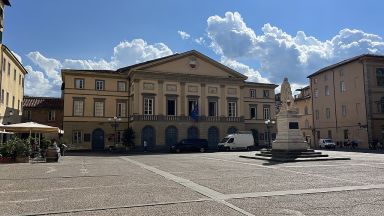
Location: Teatro del Giglio, Piazza del Giglio, Lucca, Province of Lucca, Italy | Distance: 0.30km
Visiting Teatro del Giglio
Palazzo Pfanner

Location: Palazzo Pfanner, Via degli Asili, Lucca, Province of Lucca, Italy | Distance: 0.30km
Visiting Palazzo Pfanner
Guinigi Tower

Location: Guinigi Tower, Via Sant'Andrea, Lucca, Province of Lucca, Italy | Hours: January 1 - March 20: 10.00 - 16.00 21 March - 31 May: 10.00 - 18.30* (* Saturday and Sunday closing 19:30) 1 June - 20 September: 10.00 - 19.30* (* June -Luglio: Saturday and Sunday closing at 8.30 pm; August: Saturday and Sunday closing at 20.00) 21 September - 30 September 10.00 - 18.30 1 October - 31 December: 10.00 - 16.00 (closed on 25 December) | Price: Adults € 6.00 | Website | Distance: 0.40km
Visiting Guinigi Tower
San Martino, Lucca's Cathedral
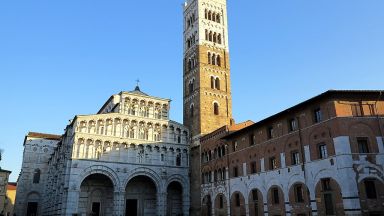
Location: St Martin Cathedral, Piazza Antelminelli, Lucca, Province of Lucca, Italy | Website | Distance: 0.40km
Visiting San Martino, Lucca's Cathedral
San Frediano Church, Lucca
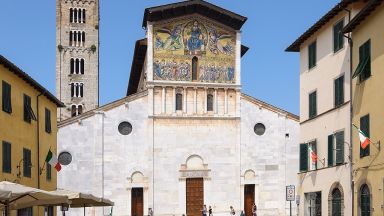
Location: Basilica di San Frediano, Piazza San Frediano, Lucca, Province of Lucca, Italy | Distance: 0.40km
Visiting San Frediano Church, Lucca
Piazza dell Anfiteatro, Lucca

Location: Piazza dell'Anfiteatro, Piazza dell'Anfiteatro, Lucca, Province of Lucca, Italy | Hours: 24 Hours | Price: Free | Distance: 0.40km
Visiting Piazza dell Anfiteatro, Lucca
Via Fillungo (Fillungo Street)

Location: Via Fillungo, Lucca, Province of Lucca, Italy | Distance: 0.40km
Visiting Via Fillungo (Fillungo Street)
Church of St Maria della Rosa

Location: Chiesa di Santa Maria della Rosa, Via della Rosa, Lucca, Province of Lucca, Italy | Distance: 0.50km
Visiting Church of St Maria della Rosa
Botanical Garden of Lucca

Location: Orto Botanico Comunale di Lucca, Rampa San Regolo, Lucca, Italy | Distance: 0.60km
Visiting Botanical Garden of Lucca
Villa Bottini in Lucca
Location: Villa Bottini, Via Elisa, Lucca, Province of Lucca, Italy | Distance: 0.60km
Visiting Villa Bottini in Lucca
Lucca's City Walls
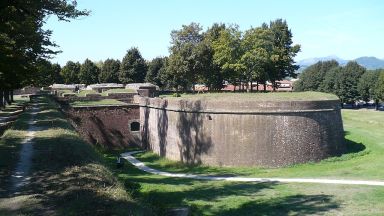
Visiting Lucca's City Walls
Villa Guinigi National Museum

Location: Villa Guinigi National Museum, Via della Quarquonia, Lucca, Province of Lucca, Italy | Hours: Tuesday to Saturday from 12.00 to 19.30 (last admission at 18.00) first and third Sunday of the month from 9.00 to 19.30 (last admission at 18.00) | Price: € 4.00 Combined ticket for the National Museums of Villa Guinigi and Palazzo Mansi | Website | Distance: 0.80km
Visiting Villa Guinigi National Museum
Aqueduct of Nottolini

Location: Aqueduct of Nottolini, Lucca, Via Tempietto, Lucca, Province of Lucca, Italy | Distance: 0.90km
Visiting Aqueduct of Nottolini
Villa Reale di Marlia

Location: Villa Reale di Marlia, Via Fraga Alta, Marlia, Province of Lucca, Italy | Hours: 19 DECEMBER – 03 FEBRUARY: Closed for maintenance and restoration works. 04 FEBRUARY – 26 FEBRUARY: Weekends only from 10am to 6pm. 01 MARCH – 05 NOVEMBER: Park opening hours every day from 10:00 to 18:00 * | Price: Park: €12 / Park and Museums: €18 | Website | Villa Reale di Marlia Entrance Ticket | Distance: 7.70km
Visiting Villa Reale di Marlia
Villa Mansi
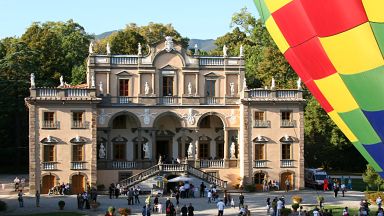
Location: Villa Mansi, Via delle Selvette, Capannori, Province of Lucca, Italy | Hours: Tuesday, Thursday, first and third Sunday of the month from 9.00 to 19.30 (last admission at 18.00) Wednesday, Friday and Saturday from 12.00 to 19.30 (last admission at 18.00) | Price: € 4.00 Combined ticket for the National Museums of Villa Guinigi and Palazzo Mansi: full price € 6.50 | Website | Distance: 9.40km
Visiting Villa Mansi
Villa Puccini in Torre del Lago

Location: Villa Puccini Museum, Viale Giacomo Puccini, Torre del Lago, Province of Lucca, Italy | Hours: November: OPEN ONLY on Saturday and Sunday from 10:00 a.m. to 12:40 p.m. (last admission 12:00) – from 2:00 p.m. to 5:20 p.m. (last admission 4:40 p.m.). December 1st to January 31st: from 10:00 a.m. to 12:40 p.m. (last admission 12:00) – from 2:00 p.m. to 5:20 p.m. (last admission 4:40 p.m.). February 1st to March 31st: from 10:00 a.m. to 12:40 p.m. (last admission 12:00) – from 2:30 p.m. to 5:50 p.m. (last admission 5:10 p.m.). April 1st to October 31st: from 10:00 a.m. to 12:40 p.m. (last admission 12:00) – from 3:00 p.m. to 6:20 p.m. (last admission 5:50 p.m.). On the days of the Puccini Festival (July and August): from 10:00 a.m. to 12:40 p.m. (last admission 12:00) – from 4:00 p.m. to 8:40 p.m. (last admission 8:00). Closed Monday morning (excluding period from June 1st to September 30th), December 25 (Christmas) | Price: € 7,00 | Website | Distance: 15.80km
Visiting Villa Puccini in Torre del Lago
Best Time to Visit Lucca
The best time to visit Lucca, Italy, largely depends on what you’re looking for in your visit. Each season offers unique attractions and experiences.
Spring (March to May)
Spring is a wonderful time to visit Lucca. The weather is mild, and the surrounding Tuscan countryside is lush and vibrant, perfect for outdoor activities like cycling around Lucca’s famous city walls or exploring the nearby hills. The tourist crowds are also thinner compared to the peak summer months. Events such as the Verdemura Garden Festival in April showcase local gardening and botanical arts, making it a colorful time to visit.
Summer (June to August)
Summer is the busiest and most vibrant season. The weather can be quite hot, especially in July and August, but this is also when Lucca comes alive with numerous events and festivals. The most notable is the Lucca Summer Festival, which attracts international music acts and large crowds. If you enjoy a lively atmosphere and don’t mind the heat, summer is a great time to visit.
Autumn (September to November)
Autumn is another excellent time to visit Lucca. The temperatures begin to cool, and the crowds start to thin out. The city celebrates several food and wine festivals, offering a taste of Tuscany’s seasonal bounty. The landscape turns into a picturesque blend of orange and yellow hues, ideal for photography and leisurely walks. Additionally, in late October to early November, Lucca hosts one of Europe’s largest comic book and gaming conventions, Lucca Comics & Games, which is a major draw for fans of the genres.
One of the most significant religious festivals of the year in Lucca is the “La Luminara di Santa Croce,” which takes place on the 13th of September. This festival is dedicated to the Volto Santo, a wooden crucifix with a legendary origin in the Holy Land. The highlight of the festival is a traditional candlelight procession through the Old Town. The procession commences at 8 PM, starting from the Basilica of San Frediano and culminating at the Cathedral of San Martino, where the Volto Santo is housed.
Winter (December to February)
Winter in Lucca is the quietest season, which might appeal if you prefer a more peaceful visit. The weather is typically mild compared to northern European cities, though it can be damp. This season offers the chance to experience Lucca without the crowds, allowing for a more relaxed exploration of its historical sites and museums. Christmas markets and festive decorations add a charming touch to the city in December.
Overall, the best times to visit Lucca are during the shoulder seasons of spring and autumn, when the weather is pleasant, and the city offers a blend of cultural activities without the peak season crowds.
Average Temperatures in Lucca
- January 11°C 51°F 11
- February 12°C 55°F 13
- March 15°C 60°F 10
- April 19°C 67°F 9
- May 24°C 76°F 10
- June 30°C 86°F 6
- July 33°C 91°F 3
- August 31°C 88°F 5
- September 28°C 83°F 11
- October 23°C 73°F 16
- November 15°C 58°F 19
- December 11°C 52°F 13
How to get to Lucca
Lucca is easily accessible both by car and public transportation due to its strategic location on the main highways and railroad lines connecting Florence to Pisa and Viareggio.
Flying to Lucca
Lucca does not have its own airport, so direct flights to Lucca are not available. However, the closest airports to Lucca are Pisa Airport, which is the most convenient option, followed by Florence, Bologna, Rome, and Genoa, in that order. Pisa Airport is the most popular choice for flights to Lucca from within Europe, while Rome is the most likely arrival airport for visitors from the US and Canada.
Visiting Lucca By Train
The train is a convenient and straightforward way to reach Lucca. The Lucca train station is located in Piazza Ricasoli, right in front of Porta San Pietro. It’s within a five-minute walk to Lucca’s historic city center, enclosed by Renaissance walls. Lucca is connected to the train lines that link Florence to Viareggio and Florence (or Pistoia) to Pisa, ensuring regular daily train service to and from Lucca. Pisa is about a 15-20 minute train ride from Lucca, Florence is an hour and 20 minutes away, and Viareggio is around 20 minutes. Other popular Tuscan destinations accessible from Lucca by train include Pistoia (approximately 45 minutes away) and Montecatini Terme (less than half an hour). Daily trains also head to Garfagnana from Lucca.
From Pisa Airport, you can catch a train to Pisa Centrale station and then change for a train to Lucca. From Florence Airport, you need to reach the train station in Florence center (Santa Maria Novella) and then take a train or bus heading to Lucca.
Visiting Lucca By Car
Lucca is situated along the A11 Firenze – Mare highway, which links Florence with Pisa and the Versilia Coast. If approaching from the North or South, take the A11 and exit at Lucca Est or Ovest. If arriving from the coast on the A12 Genova – Roma highway, connect at Viareggio and then proceed to Lucca Ovest via the faster road known as Bretella. Be aware that tolls apply on A11 and A12. If coming from the Pisa or Florence airports, follow the indications to A11 in both cases. Lucca’s highway exits are located approximately 1 km from the city center.
Visiting Lucca by Bus
The bus station is located in Piazzale Verdi, inside the city walls. Lucca is connected to several Tuscan cities, including Florence, Pisa, and Viareggio, via bus operated by VaiBus. While bus rides may take longer than trains, they are available as an alternative to get to Lucca.
Renting a Bike in Lucca
Whether you arrive by train or bus, you can opt to explore Lucca on foot or rent a bike. The city is known for being bike-friendly, with many bike-reserved areas throughout. It’s a great way to navigate the small and flat city. Renting a bike can be convenient if you’re short on time. Lucca is renowned for its well-preserved Renaissance walls, and biking atop them offers stunning views. You’ll find plenty of rental bike shops, especially near the access points to the ramparts, offering affordable hourly and daily rates. Two famous historical rental bike shops are located inside Porta Santa Maria, with others near Porta San Pietro and along the way from Porta Elisa toward the centre (after the old Porta San Gervasio).

